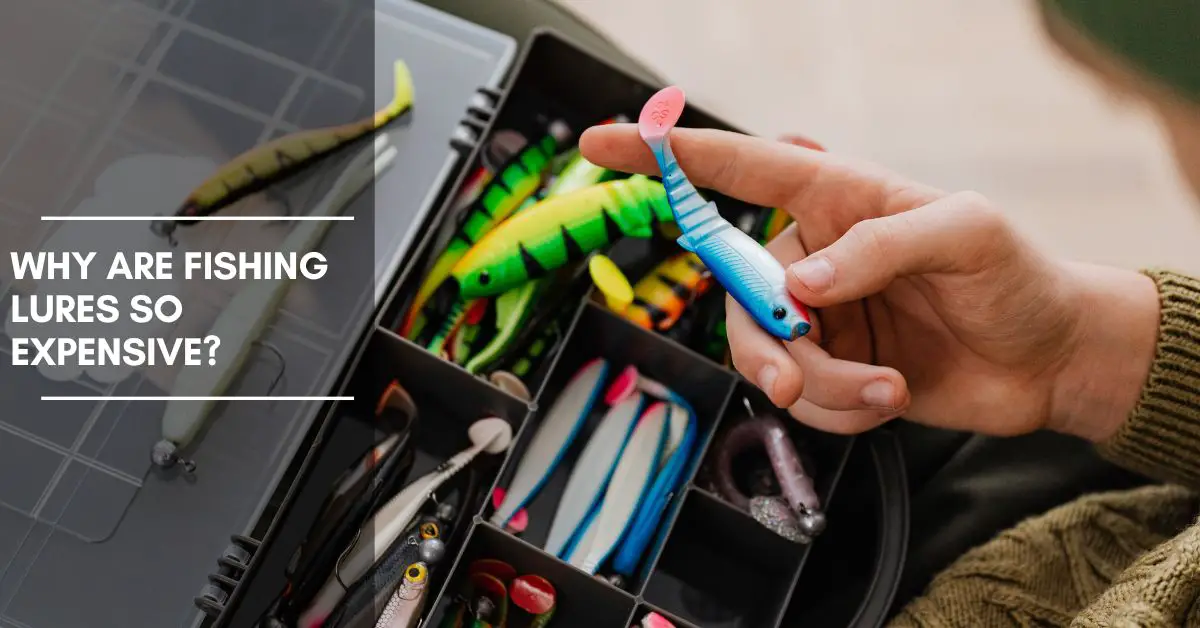Fishing lures are an essential part of any angler’s tackle box. They play a critical role in attracting fish and can make or break your fishing trip. But why are they so expensive?
In this article, I will delve into the world of fishing lures to understand the factors contributing to their cost. I’ll discuss the materials, craftsmanship, research and development, brand reputation, and more.
By the end of this article, you’ll have a better understanding of why these small yet crucial fishing accessories come with such a hefty price tag.
Fishing lures can be expensive due to the high-quality materials used, the craftsmanship involved, and the extensive research and development that goes into their creation. They are designed to mimic the appearance and movement of prey, making them effective tools for catching fish.
Stick around to discover the key factors that make fishing lures expensive and learn how to make the best decision when investing in your fishing gear.
High-Quality Materials
Durable Components
Fishing lures are made from a variety of materials, including metal, plastic, and wood. These materials need to be durable and able to withstand the harsh conditions of the water, as well as the bites and struggles of fish. High-quality materials often come at a higher cost, which contributes to the overall price of the lures.
Realistic Finishes
The finishes on fishing lures play a significant role in their effectiveness. These finishes can include realistic paint jobs, holographic finishes, or even hand-painted details. Achieving these lifelike appearances requires time, skill, and high-quality materials, which add to the overall cost of the lures.
Expert Craftsmanship
Intricate Design
The design of a fishing lure is crucial to its performance. Lures need to be able to mimic the movement and appearance of live bait, and this requires a level of precision that only expert craftsmanship can achieve. Attention to detail in the design process, including the shape, weight distribution, and balance, can significantly impact the price of a lure.
Handmade Lures
Some fishing lures are still handmade by skilled artisans, which can drive up their price. These handmade lures often feature unique designs and a higher level of craftsmanship than mass-produced lures. The time and effort that go into creating these one-of-a-kind lures are reflected in their cost.
Research and Development
Innovations in Lure Technology
The fishing industry is constantly evolving, with new technologies and techniques being developed to improve the effectiveness of fishing gear. This includes innovations in lure design, such as new materials, shapes, and action mechanisms. The research and development required to bring these innovations to market can be expensive, and these costs are passed on to the consumer in the form of higher-priced lures.
Field Testing
Before a fishing lure can hit the market, it needs to be thoroughly field-tested to ensure its effectiveness. This process involves testing the lure in a variety of conditions and environments to fine-tune its performance. The costs associated with field testing can contribute to the overall price of the lure.
Brand Reputation and Marketing
Established Brands
Brand reputation plays a role in the pricing of fishing lures. Established brands with a history of producing high-quality, effective lures often command higher prices than lesser-known or newer brands. Consumers are willing to pay more for a product from a trusted brand with a proven track record.
Marketing and Advertising
As with any consumer product, marketing, and advertising play a role in the cost of fishing lures. Companies invest in advertising campaigns, sponsorships, and other marketing efforts to promote their products, and these costs are ultimately passed on to the consumer.
Conclusion
Fishing lures can be expensive for a variety of reasons, including the use of high-quality materials, expert craftsmanship, research and development, and brand reputation. While the price of a lure may seem steep, it’s important to remember that investing in a well-made, effective lure can make all the difference in your fishing success.
FAQs
- Why are some fishing lures more expensive than others? Some lures are more expensive due to factors like the materials used, craftsmanship, research and development, and brand reputation.
- Are expensive fishing lures worth the investment? High-quality, expensive lures can lead to better fishing success and may be more durable, making them a worthwhile investment for serious anglers.
- Do I need to buy the most expensive lures to be successful in fishing? No, you don’t always need the most expensive lures. Choose lures that best match your target species, fishing conditions, and personal preferences.
- How do I know if a fishing lure is worth the price? Look for reviews from other anglers, consider the brand’s reputation, and assess the lure’s materials and craftsmanship to determine if it’s worth the investment.
- What are some alternatives to buying expensive fishing lures? You can look for sales or discounts on high-quality lures, try less expensive brands that still offer quality products, or even consider making your own lures as a cost-effective alternative.

